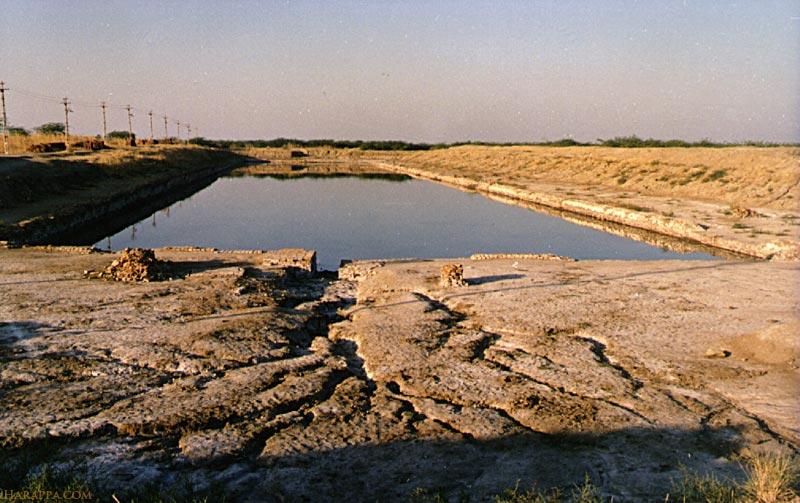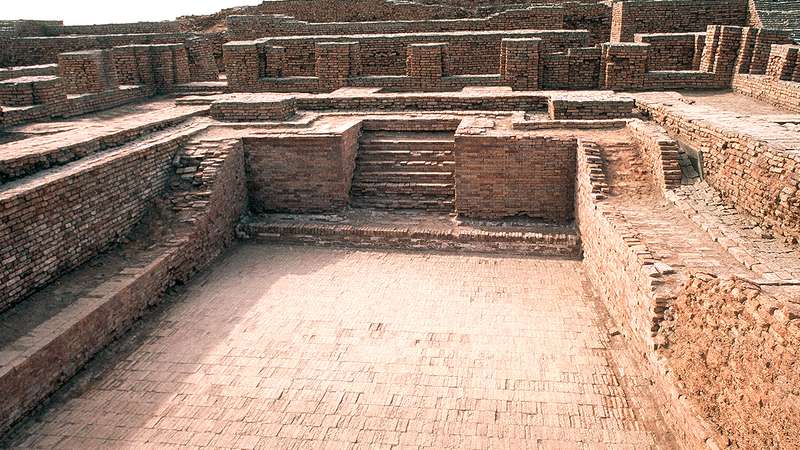The Harappan Civilization flourished in the Indian subcontinent during the 3rd millennium B.C. It was a great civilization & pieces of evidence discovered during archaeological excavation through light on nature & character of this civilization. This evidences helped in understanding the socio-cultural-religious-eco & political life of Harappan people.
Harappan Civilization was an indigenous civilization. Harappan Civilization was not the result of any sudden development but in reality, it represented the culmination of a long process of a gradual evolution spanning across more than 3000 years.
Why it was called Urban Civilization?
The Harappan Civilization was an urban civilization. The population size of Harappan settlements, their population density the pattern of their economic activities, and other such dimensions reflect the urban character of Harappan settlements (city). The settlement like Harappa & Mohenjo-Daro was mega-cities of this great civilization because more than 30,000 – 40,000 people lived there.
Till now more than 1400 Harappan towns & cities were discovered. This large number of urban centers indicates that Harappan Civilization reflected on the urban revolution in the Indian subcontinent in the 3rd millennium BC. Harappan Civilization was highly evolved because Harappan lived a well-settled life socio-religious institutions were well developed. The Harappan cities didn’t represent any haphazard growth but their cities were laid out in a planned manner.
Harappan Civilization was a multiclass civilization
Harappan Civilization was a multiclass civilization because the rich and poor very important and less important people lived together in Harappan cities. Some of the Harappan people lived in big houses while many others lived in a single-room barrack. The pieces of evidence discovered from graves also support the multiclass character of Harappan Civilization. The similarities of Harappan cities in terms of town planning, common script system of weights & measures, uniform size of bricks, and similar religious life indicate that Harappan Civilization was administered by some centralized authority.
It appears that Harappa & Mohenjo-Daro were two capital of this great civilization. Nothing is known definitely about the nature of polity on basis of the predominance of the merchant class in Harappan cities. Scholars have opined that civilization was administered by merchants. The presence of the modern municipality type urban institution in Harappan cities was another important feature of this great civilization.
Without such an urban institution, the planned layout of cities, construction & maintenance of public buildings, etc. would have been impossible. Science & technology know-how to Harappan Civilization was highly advanced. The Harappan know how to make bronze by mixture tin & copper in definite proportion. Their medical knowledge was at an advanced level as revealed by evidence of skull surgery found at Kalibangan & Lothal.

Harappan knew the technology of making books & ships. They were aware of the technology used in waterproofing walls & surfaces. The civil engineering knowledge was quite advance because of Harappan builds-Dams-forts & other big public buildings. Harappan Civilization was secular in nature because till now not clearly identical public religious building has been discovered. Religious evidence associated with this civilization has been found in private houses. This suggests that religion was a private affair in the life of Harappan & public life was not much influenced by religion.
The predominance of secondary & tertiary economic activities was another important feature of Harappan Civilization. Most of the Harappan were involved in arts & crafts and trade & commerce. The Harappan practices agriculture & domesticated animals but these were not identical features of this great civilization.
The materialistic outcome was dominant among the Harappan people. The high level of prosperities of Harappan cities revealed by archaeological pieces of evidence suggests that Harappan didn’t waste their time & energy in ritual ceremonies & philosophical speculation. But they invested their efforts in the improvement of their worldly life. Harappan has extensive resources at its disposal.
The utilitarian outcome was also dominant in Harappan Civilization. The Harappan focused on making life comfortable rather than luxurious & refine. Walls of their houses were plain without any paint etc. the door was simple without any carving. Harappan Civilization belongs to great tradition because archaeological evidence suggests that most of Harappan were literate. The script was known to Harappan people. Evidence of script has been found from the pottery & seals of common use. These pots & seals were manufactured by common people who confirmed that the makers & users of these pots & seals were literate.
The Harappan Civilization was a peace-loving civilization. Harappan lived a defensive life because their cities were fortified. Weapons like sword & shield were rare in discoveries from Harappan settlements. The Harappan Civilization was extensive until now more than 1400 Harappan towns & cities have been discovered. It was 20 times bigger than its contemporary Egyptian civilization & 12 times bigger than Mesopotamian Culture.
The distance between its northernmost & south was about 1400 km & the distance between east & west was about 1600 km. Harappan Civilization was a proto-historic civilization because Harappan script yet to be deciphered. It was a bronze-age civilization because the use of bronze was a typical feature of the 3rd millennium BC worldwide. Harappan Civilization was a river in civilization because most of the Harappan settlements were located in river valleys. Harappan Civilization was a long-lasting civilization because it flourished for more than 1000 years.

